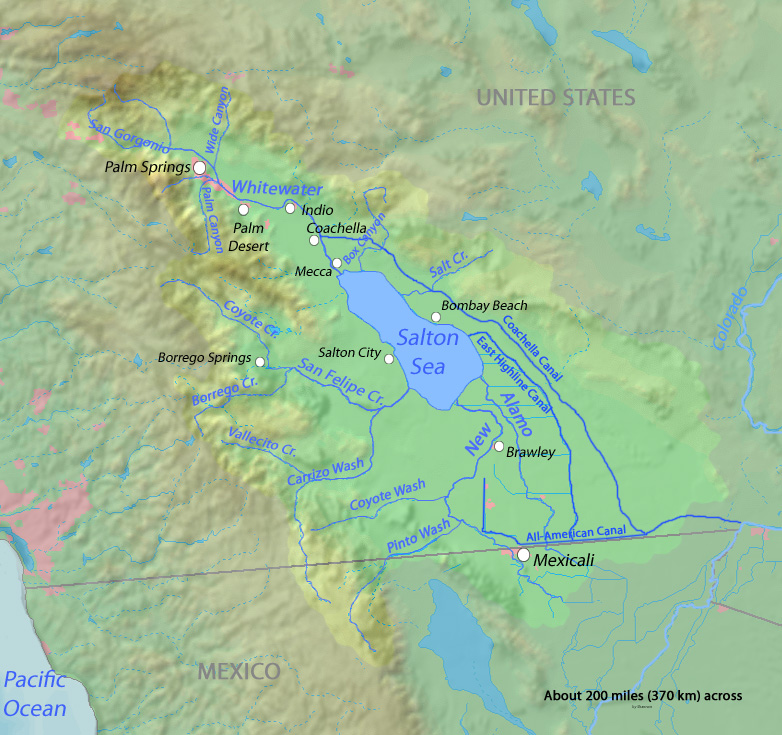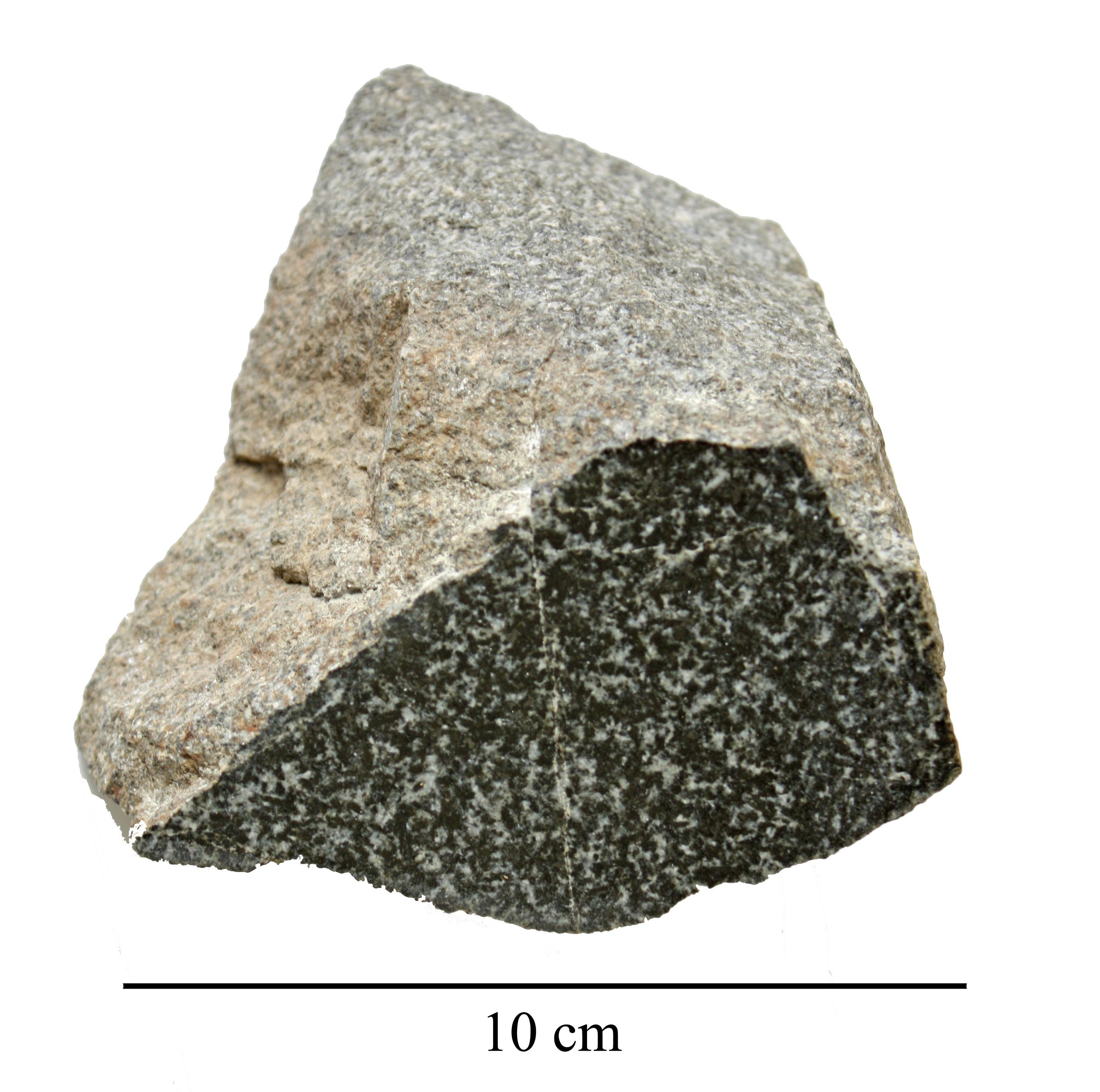|
Lockatong Formation
The Triassic Lockatong Formation is a mapped bedrock unit in Pennsylvania, New Jersey, and New York. It is named after the Lockatong Creek in Hunterdon County, New Jersey. Description The Lockatong is defined as a light to dark gray, greenish-gray, and black very fine grained sandstone, silty argillite, and laminated mudstone. In New Jersey, the cyclic nature of the formation is noted with hornfels near diabase and basalt flows. Depositional environment The Lockatong is often described as lake or litoral sediments. The interfingering nature of the sediments with the surrounding Stockton Formation and Passaic Formation suggests that these litoral environments shifted as climate or as the dynamic terrane of the area developed.Faill, R.T., (2004). The Birdsboro Basin. ''Pennsylvania Geology'' V. 34 n. 4. The deposition of calcitic sediments is indicative of a climate with high evaporation rates. More recent studies suggest that the Lockatong was a highly turbulent environment, ... [...More Info...] [...Related Items...] OR: [Wikipedia] [Google] [Baidu] |
Geological Formation
A geological formation, or simply formation, is a body of rock having a consistent set of physical characteristics (lithology) that distinguishes it from adjacent bodies of rock, and which occupies a particular position in the layers of rock exposed in a geographical region (the stratigraphic column). It is the fundamental unit of lithostratigraphy, the study of strata or rock layers. A formation must be large enough that it can be mapped at the surface or traced in the subsurface. Formations are otherwise not defined by the thickness (geology), thickness of their rock strata, which can vary widely. They are usually, but not universally, tabular in form. They may consist of a single lithology (rock type), or of alternating beds of two or more lithologies, or even a heterogeneous mixture of lithologies, so long as this distinguishes them from adjacent bodies of rock. The concept of a geologic formation goes back to the beginnings of modern scientific geology. The term was used by ... [...More Info...] [...Related Items...] OR: [Wikipedia] [Google] [Baidu] |
Argillite
Argillite () is a fine-grained sedimentary rock composed predominantly of Friability, indurated clay particles. Argillaceous rocks are basically lithified muds and Pelagic sediment, oozes. They contain variable amounts of silt-sized particles. The argillites grade into shale when the Fissility (geology), fissile layering typical of shale is developed. Another name for poorly lithified argillites is ''mudstone''. These rocks, although variable in composition, are typically high in aluminium and silica with variable alkali and alkaline earth cations. The term pelite, ''pelitic'' or ''pelite'' is often applied to these sediments and rocks. Metamorphism of argillites produces slate, phyllite, and pelitic schist. Belt Supergroup The Belt Supergroup, an assemblage of rocks of late Precambrian (Mesoproterozoic) age, includes thick sequences of argillite, as well as other metamorphosed or semi-metamorphosed mudstones.Schieber, J. 1990. Significance of styles of epicontinental shale sedi ... [...More Info...] [...Related Items...] OR: [Wikipedia] [Google] [Baidu] |
Nomen Dubium
In binomial nomenclature, a ''nomen dubium'' (Latin for "doubtful name", plural ''nomina dubia'') is a scientific name that is of unknown or doubtful application. Zoology In case of a ''nomen dubium,'' it may be impossible to determine whether a specimen belongs to that group or not. This may happen if the original type series (i. e. holotype, isotype, syntype or paratype) is lost or destroyed. The zoological and botanical codes allow for a new type specimen, or neotype, to be chosen in this case. A name may also be considered a ''nomen dubium'' if its name-bearing type is fragmentary or lacking important diagnostic features (this is often the case for species known only as fossils). To preserve stability of names, the ''International Code of Zoological Nomenclature'' allows a new type specimen, or neotype, to be chosen for a ''nomen dubium'' in this case. 75.5. Replacement of unidentifiable name-bearing type by a neotype. When an author considers that the taxonomic identity ... [...More Info...] [...Related Items...] OR: [Wikipedia] [Google] [Baidu] |
Eupelor
''Eupelor'' is a dubious genus of prehistoric amphibian belonging to the temnospondyl family Metoposauridae. Fossils have been found in present-day Pennsylvania, within the Newark Supergroup, dating to the Late Triassic (Norian). Taxonomy The ''Eupelor'' type species, ''E. durus'', was named ''Mastodonsaurus durus'' by Edward Drinker Cope in 1866 on the basis of AMNH 3927, a number of clavicles and the tooth AMNH 2333 (which could have belonged to a different temnospondyl apart from ''Eupelor''), from the Lockatong Formation (Phoenixville Tunnel site) of Phoenixville, Pennsylvania. In 1868 Cope allocated the species to its own genus, ''Eupelor'', based on differences from ''Metoposaurus'' (then known as ''Metopias''). Colbert and Imbrie (1956) reviewed all Triassic metoposaurids and concluded that ''Eupelor'' should be used for all metoposaurids from North America, especially ''Koskinonodon ''Anaschisma'' ("ripped up") is an extinct genus of large temnospondyls. These ani ... [...More Info...] [...Related Items...] OR: [Wikipedia] [Google] [Baidu] |
Phytosaur
Phytosaurs (Φυτόσαυροι in Greek, meaning 'plant lizard') are an extinct group of large, mostly semiaquatic Late Triassic archosauriform or basal archosaurian reptiles. Phytosaurs belong to the order Phytosauria and are sometimes referred to as parasuchians. Phytosauria, Parasuchia, Parasuchidae, and Phytosauridae have often been considered equivalent groupings containing the same species. Some recent studies have offered a more nuanced approach, defining Parasuchidae and Phytosauridae as nested clades within Phytosauria as a whole. The clade Phytosauria was defined by Paul Sereno in 2005 as '' Rutiodon carolinensis'' and all taxa more closely related to it than to '' Aetosaurus ferratus'', '' Rauisuchus tiradentes'', '' Prestosuchus chiniquensis'', '' Ornithosuchus woodwardi'', or '' Crocodylus niloticus'' (the Nile crocodile). Phytosaurs were long-snouted and heavily armoured, bearing a remarkable resemblance to modern crocodilians in size, appearance, and lifesty ... [...More Info...] [...Related Items...] OR: [Wikipedia] [Google] [Baidu] |
Fish Kill
The term fish kill, known also as fish die-off, refers to a localized mass mortality event, mass die-off of fish populations which may also be associated with more generalized mortality of aquatic life.University of Florida. Gainesville, FL (2005)"Fish kill." ''Plant Management in Florida's Waters.'' The most common cause is reduced oxygen in the water, which in turn may be due to factors such as drought, harmful algal bloom, overpopulation (biology), overpopulation, or a sustained increase in water temperature. Fish diseases and parasites, Infectious diseases and parasites can also lead to fish kill. Toxicity is a real but far less common cause of fish kill, and is often associated with man-made water pollution. Fish kills are often the first visible signs of environmental stress and are usually investigated as a matter of urgency by environmental agencies to determine the cause of the kill. Many fish species have a relatively low tolerance of variations in environmental conditi ... [...More Info...] [...Related Items...] OR: [Wikipedia] [Google] [Baidu] |
Oxygen Saturation
Oxygen saturation (symbol SO2) is a relative measure of the concentration of oxygen that is Dissolution (chemistry), dissolved or carried in a given medium as a proportion of the maximal concentration that can be dissolved in that medium at the given temperature. It can be measured with a dissolved oxygen probe such as an oxygen sensor or an optode in liquid media, usually water. The standard unit of oxygen saturation is percent (%). Oxygen saturation can be measured regionally and noninvasively. Artery, Arterial oxygen saturation (SaO2) is commonly measured using pulse oximetry. Tissue saturation at peripheral scale can be measured using near-infrared spectroscopy, NIRS. This technique can be applied on both muscle and brain. In medicine In medicine, oxygen saturation refers to ''oxygenation'', or when oxygen molecules () enter the Tissue (biology), tissues of the body. In this case blood is oxygenated in the lungs, where oxygen molecules travel from the air into the blood. O ... [...More Info...] [...Related Items...] OR: [Wikipedia] [Google] [Baidu] |
Salton Sea
The Salton Sea is a shallow, landlocked, highly salinity, saline endorheic lake in Riverside County, California, Riverside and Imperial County, California, Imperial counties in Southern California. It lies on the San Andreas Fault within the Salton Trough, which stretches to the Gulf of California in Mexico. The lake is about at its widest and longest. A 2023 report put the surface area at 318 square miles (823.6 km2). The Salton Sea became a resort destination in the 20th century, but saw die-offs of fish and birds in the 1980s due to contamination from Agricultural pollution, farm runoff, and clouds of Particulate pollution, toxic dust in the current century as evaporation exposed parts of the lake bed. Over millions of years, the Colorado River had flowed into the Imperial Valley and deposited alluvium (soil), creating fertile farmland, building up the terrain, and constantly moving its main course and river delta. For thousands of years, the river alternately flowed i ... [...More Info...] [...Related Items...] OR: [Wikipedia] [Google] [Baidu] |
Litoral
The littoral zone, also called litoral or nearshore, is the part of a sea, lake, or river that is close to the shore. In coastal ecology, the littoral zone includes the intertidal zone extending from the high water mark (which is rarely inundated), to coastal areas that are permanently submerged — known as the ''foreshore'' — and the terms are often used interchangeably. However, the geographical meaning of ''littoral zone'' extends well beyond the intertidal zone to include all neritic waters within the bounds of continental shelves. Etymology The word ''littoral'' may be used both as a noun and as an adjective. It derives from the Latin noun ''litus, litoris'', meaning "shore". (The doubled ''t'' is a late-medieval innovation, and the word is sometimes seen in the more classical-looking spelling ''litoral''.) Description The term has no single definition. What is regarded as the full extent of the littoral zone, and the way the littoral zone is divided into subregio ... [...More Info...] [...Related Items...] OR: [Wikipedia] [Google] [Baidu] |
Lake
A lake is often a naturally occurring, relatively large and fixed body of water on or near the Earth's surface. It is localized in a basin or interconnected basins surrounded by dry land. Lakes lie completely on land and are separate from the ocean, although they may be connected with the ocean by rivers. Lakes, as with other bodies of water, are part of the water cycle, the processes by which water moves around the Earth. Most lakes are fresh water and account for almost all the world's surface freshwater, but some are salt lakes with salinities even higher than that of seawater. Lakes vary significantly in surface area and volume of water. Lakes are typically larger and deeper than ponds, which are also water-filled basins on land, although there are no official definitions or scientific criteria distinguishing the two. Lakes are also distinct from lagoons, which are generally shallow tidal pools dammed by sandbars or other material at coastal regions of ocean ... [...More Info...] [...Related Items...] OR: [Wikipedia] [Google] [Baidu] |
Basalt
Basalt (; ) is an aphanite, aphanitic (fine-grained) extrusive igneous rock formed from the rapid cooling of low-viscosity lava rich in magnesium and iron (mafic lava) exposed at or very near the planetary surface, surface of a terrestrial planet, rocky planet or natural satellite, moon. More than 90% of all volcanic rock on Earth is basalt. Rapid-cooling, fine-grained basalt is chemically equivalent to slow-cooling, coarse-grained gabbro. The eruption of basalt lava is observed by geologists at about 20 volcanoes per year. Basalt is also an important rock type on other planetary bodies in the Solar System. For example, the bulk of the plains of volcanism on Venus, Venus, which cover ~80% of the surface, are basaltic; the lunar mare, lunar maria are plains of flood-basaltic lava flows; and basalt is a common rock on the surface of Mars. Molten basalt lava has a low viscosity due to its relatively low silica content (between 45% and 52%), resulting in rapidly moving lava flo ... [...More Info...] [...Related Items...] OR: [Wikipedia] [Google] [Baidu] |
Diabase
Diabase (), also called dolerite () or microgabbro, is a mafic, holocrystalline, subvolcanic rock equivalent to volcanic basalt or plutonic gabbro. Diabase dikes and sills are typically shallow intrusive bodies and often exhibit fine-grained to aphanitic chilled margins which may contain tachylite (dark mafic glass). ''Diabase'' is the preferred name in North America, while ''dolerite'' is the preferred name in the rest of the English-speaking world, where sometimes the name ''diabase'' refers to altered dolerites and basalts. Some geologists prefer to avoid confusion by using the name ''microgabbro''. The name ''diabase'' comes from the French , and ultimately from the Greek 'act of crossing over, transition', whereas the name ''dolerite'' comes from the French , from the Greek 'deceitful, deceptive', because it was easily confused with diorite. Petrography Diabase normally has a fine but visible texture of euhedral lath-shaped plagioclase crystals (62%) set i ... [...More Info...] [...Related Items...] OR: [Wikipedia] [Google] [Baidu] |









